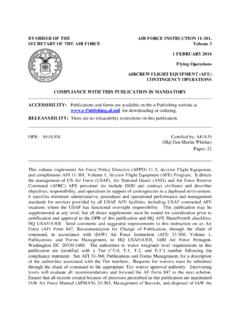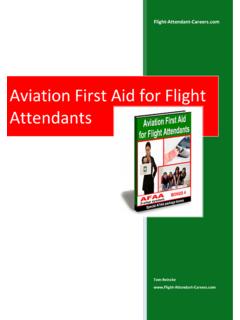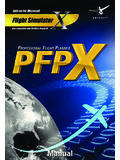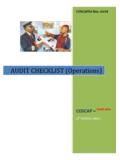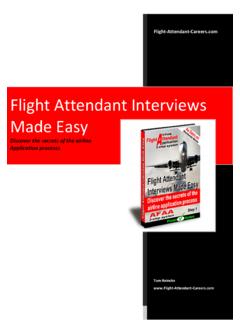Transcription of BY ORDER OF THE COMMANDER AIR FORCE …
1 BY ORDER OF THE COMMANDER AIR FORCE MATERIEL COMMAND AIR FORCE INSTRUCTION 11-202V3 AIR FORCE MATERIEL COMMAND Supplement 24 NOVEMBER 2015 Flying operations GENERAL FLIGHT RULES COMPLIANCE WITH THIS PUBLICATION IS MANDATORY ACCESSIBILITY: Publications and forms are available on the e-Publishing website at downloading or ordering RELEASABILITY: There are no releasability restrictions on this publication OPR: AFMC/A3V Supersedes: AFI11-202V3_AFMCSUP, 25 August 2011 Certified by: AFMC/A3V (Col Monte R. Cannon) Pages: 21 This supplement implements AFI11-202V3, General Flight Rules. This supplement describes AFMC s general flight rules and procedures for use in conjunction with the basic AFI.
2 It applies to all AFMC units and personnel conducting flying operations . It also applies to AFRC, ANG, and DCMA units under AFMC OPCON. This publication may not be supplemented. Refer recommended changes and questions about this publication to the Office of Primary Responsibility (OPR) using AF Form 847, Recommendation for Change of Publication; route AF Forms 847 from the field through the appropriate functional chain of command to AFMC/A3V. The authorities to waive wing/unit level requirements in this publication are identified with a Tier ( T-0, T-1, T-2, T-3 ) number following the compliance statement.
3 See AFI 33-360, Publications and Forms Management, for a description of the authorities associated with the Tier numbers. Submit requests for waivers through the chain of command to the appropriate Tier waiver approval authority, or alternately, to the Publication OPR for non-tiered compliance items. Ensure that all records created as a result of processes prescribed in this publication are maintained in accordance with (IAW) Air FORCE Manual (AFMAN) 33-363, Management of Records, and disposed of IAW Air FORCE Records Information Management System (AFRIMS) Records Disposition Schedule (RDS). 2 AFI11-202V3_AFMCSUP 24 NOVEMBER 2015 SUMMARY OF CHANGES This document has been substantially revised and must be completely reviewed.
4 Major changes include: Numerous paragraphs renumbered to synchronize with new AFI 11-202V3 numbering; Tiering, waiver authority and approval authority clarified throughout; Deleted duplicate guidance found in other instructions; Guidance added for CNS/ATM certifications and operational approvals; Guidance added for portable electronic devices and personally owned devices; Updated crew requirements table; Added guidance for non-pilot control of aircraft; Updated risk management worksheet guidance; Updated guidance for electronic media; Added guidance on Special Departure Procedures and one engine inoperative climb performance; Clarified night glidepath guidance requirements.
5 AFI11-202V3_AFMCSUP 24 NOVEMBER 2015 3 Chapter 1 ROLES AND RESPONSIBILITIES Waiver Process. Route all waivers through appropriate operations channels to flying unit commanders, and the OG/CC. Use an AFMC Form 73, AFMC Flight operations Waiver Request, to process the waiver. Submit T-0, T-1, and T-2 waivers to the AFMC/A3V SharePoint for review and processing. Email a final copy of T-3 waivers to AFMC/A3V after approval. HQ AFMC/A3 is the waiver issuing official for Tier 0 waivers after obtaining the necessary non-AF authority permission and HAF/A3O concurrence. HQ AFMC/A3 is the waiver issuing official for Tier 1 waivers after obtaining HAF/A3O concurrence.
6 HQ AFMC/A3 is the approving official for Tier 2 waivers. AFMC/A3V is the OPR for the three-volume set of Flight Test (FT) instructions containing attachments for each weapon system flown in AFMC. These instructions are numbered AFI 11-2FT Volume 1, 2, and 3 and will contain the training, evaluation criteria, and operations procedures, respectively, for each weapon system. AFMC uses these instructions in lieu of AFI 11-2 MDS-specific volumes for flying operations . In the absence of published guidance, AFMC units will coordinate with HQ AFMC/A3V for approval of locally developed guidelines. These guidelines should be consistent with similar guidance specified in the appropriate AFI 11-2 MDS-specific lead MAJCOM Volumes.
7 In addition, aircraft on loan to AFMC undergoing short-term flight test programs will be flown according to the lead MAJCOM guidance if no AFMC AFI 11-2FT-series or other guidance exists. (T-2). (Added) AFMC flying unit supplements to AFI 11-202V3 are not authorized. Units will incorporate any operational procedures into the AFI 11-2FT series as applicable (T-2), and obtain AFMC/A3V review and approval of AFI 11-2FT series unit supplements prior to publication. Include AFMC/A3V and AFMC/A3O on the distribution list for approved supplements to AFI 11-2FT Volume 3. AFMC accepts CNS/ATM Lead MAJCOM certifications and approvals.
8 Refer to AFMC/A3V SharePoint for the current MDS specific CNS/ATM certifications, approvals and training requirements. If training is mandated, crews shall not use CNS equipment until specified training has been certified complete. AFMC aircrew will follow guidance in the 11-2 FTV3 or 11-2 MDS Vol. 3. (T-2). 4 AFI11-202V3_AFMCSUP 24 NOVEMBER 2015 Chapter 2 FLIGHT READINESS (Added) Time spent traveling ( , as a passenger or in a POV) to or from a TDY location does not count as crew rest for the subsequent Flight Duty Period (FDP). (T-2). (Added) USAF Test Pilot School (TPS) students will not be scheduled for events that would deny them 12 hours of crew rest.
9 However, students may elect to use school facilities ( , computers, data reduction equipment and audio-visual equipment) so long as it does not interfere with the opportunity for at least 8 hours of uninterrupted rest during the 12 hours immediately prior to the beginning of the flight duty period. To ensure this happens, students will depart the USAF TPS no later than 1 hour before the 8 hour window for uninterrupted rest begins. (T-2). This provision does not apply to lengthening the FDP. Flight Duty Period (FDP). AFMC/A3 authorizes OG/CCs to extend the FDP a maximum of 2 hours. To minimize risk due to fatigue, supervisors at all levels may further restrict crew duty day for events such as flight test, practice takeoffs, emergency procedures, air refueling, low level operations , low approaches, touch-and-go landings, or night operations .
10 The PIC may not extend the FDP. (Added) For deployed crews, FDP normally begins upon arrival to the aircraft unless crew briefing occurs earlier. Aircraft commanders should apply judgment to adjust FDP start time to unique situations such as lengthy travel times from billeting. The PIC will follow AFI 21-101, Aircraft and Equipment Maintenance Management for determining crew chief work/rest schedules. (Added) FCF/ACF, proficiency training, test sorties, test support sorties, and tactical events, must be completed during the first 12 hours of the FDP and are limited to a maximum of three sorties per day.











